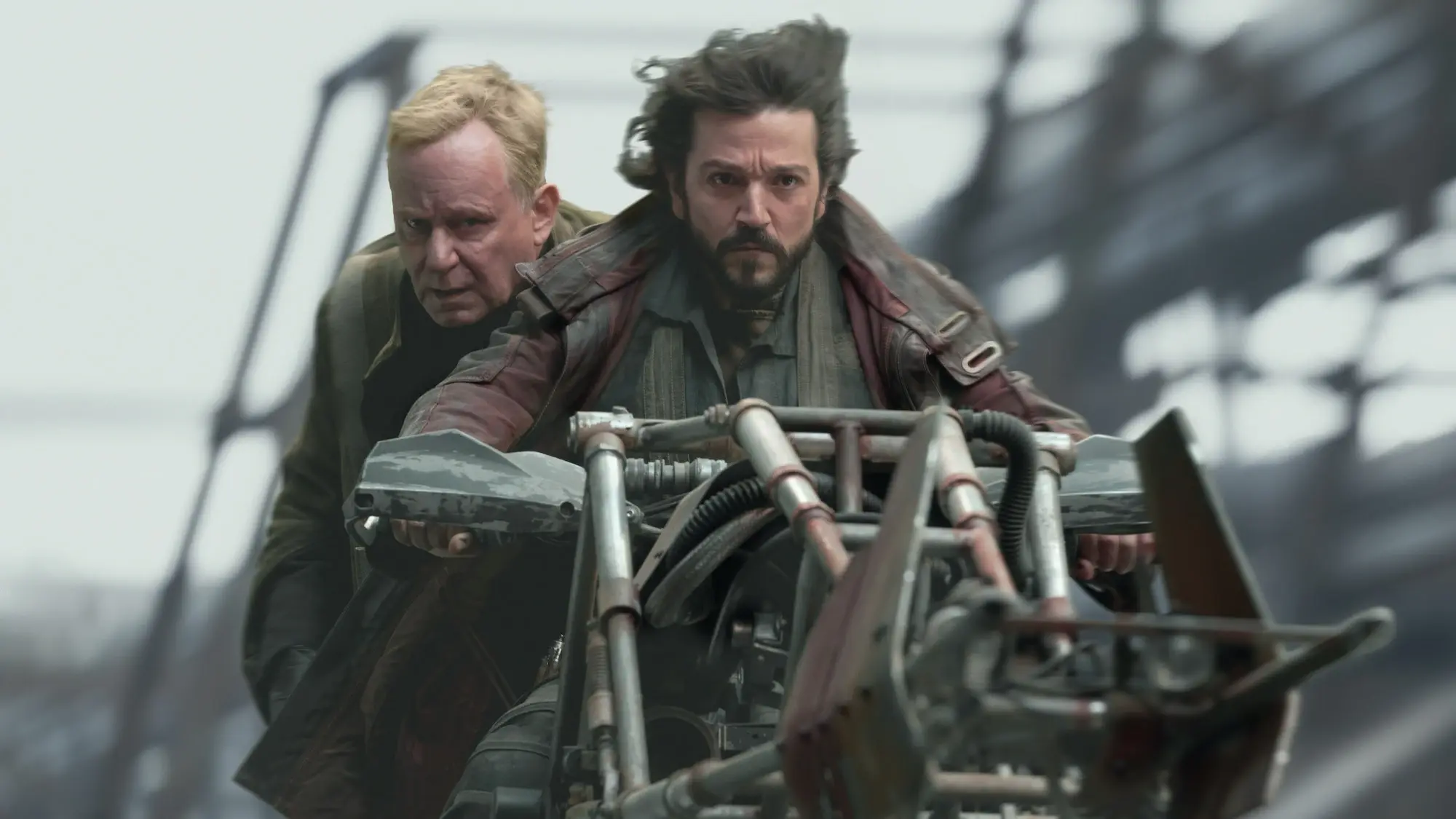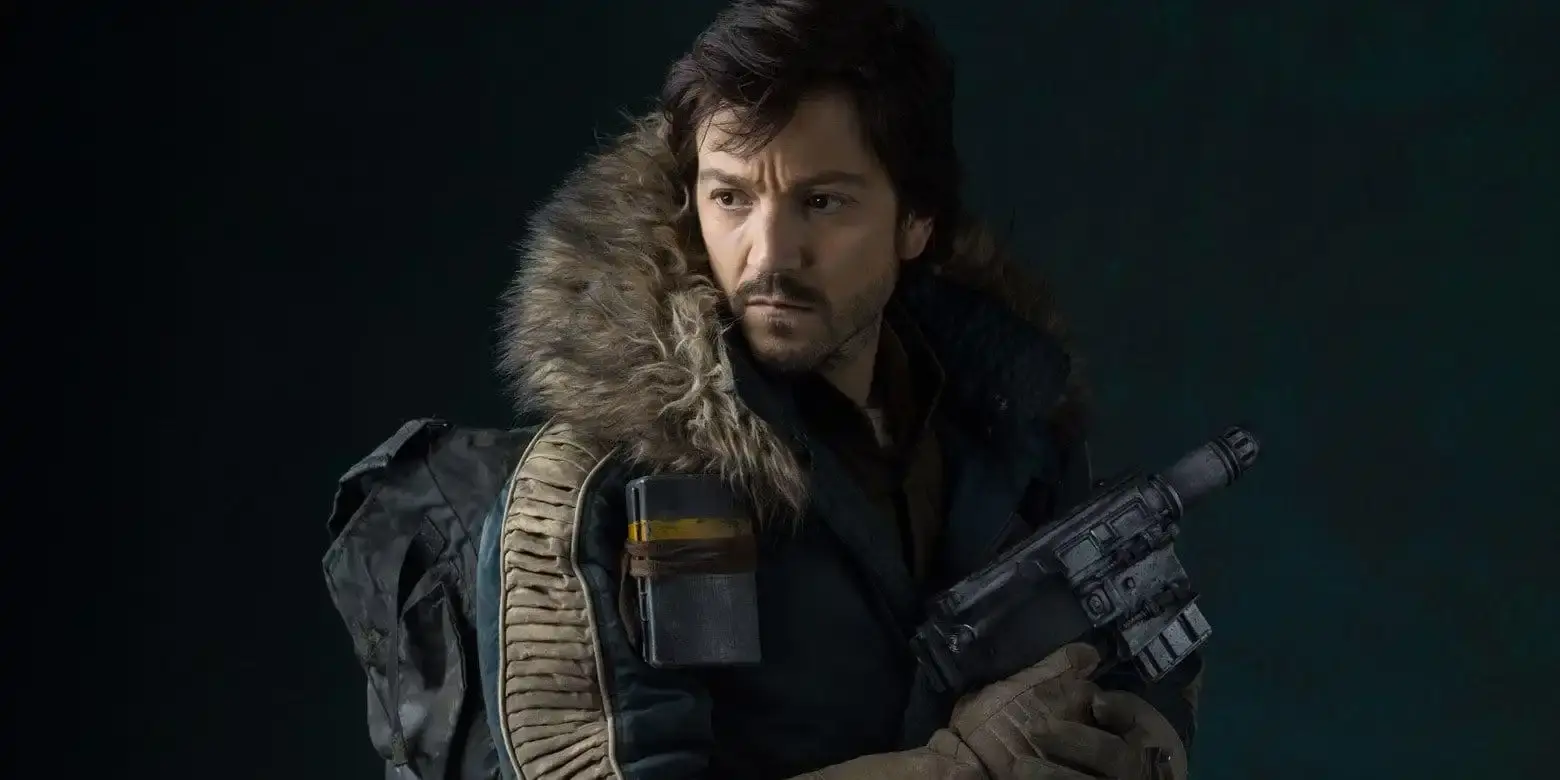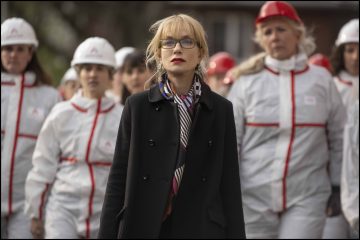
As industrial synth narrates this future world; our protagonist enters a strip joint. The seediness is palpable, from the corrupt cops keeping the bar company, to the neon lights that fail to make this establishment seem anything other than dark. Those cops, having divorced themselves from the bar follow our protagonist out and into an alleyway. He kills one, in error, and then executes the other. And so begins Andor, the latest Star Wars series on Disney +.
After the disappointments that were Obi-Wan Kenobi and the Book of Boba Fett, I could hardly bring myself to care about the streaming giant’s latest foray into George Lucas’s world. So muted was the marketing around this latest release, that I hadn’t heard about it until the day of its debut. It can’t boast of an iconic central character to draw an audience, nor the confidence of Disney execs to put a bit of money into selling it.
But that’s fine, it doesn’t need either, because to my surprise this lowkey addition to the canon is the best this side of 1983 – so far, at least. Andor premiered last week with three episodes at once, Disney again projecting their lack of confidence in the project, and the lack of a cereal box toy character at its helm to draw eyeballs. But judging by the strength of its first hours, it’s hard to see how this show could go from stun to kill.

Mexican actor Diego Luna plays Cassian Andor
Andor is named for its titular hero, Cassian Andor, who you probably don’t remember from the 2016 film, Rogue One. It recounts events six years before the film in which he meets his fate, telling the story of his journey from a petty criminal to a major figure in the Rebel Alliance. This is a back-to-basics Star Wars story – it doesn’t scrape down to serve the fans, or prop itself up by relying on lightsabre crutches. There’s no young Jabba the Hutt shoved in as a background extra, or an annoying droid voiced by Stephen Merchant for comic relief. It’s a genuinely new story.
New in one sense at least. We haven’t seen this tone before in Star Wars, but the archetype is familiar. Andor is a classic hero’s journey, in which the protagonist is treading the water of life, before the waves of an inciting incident force him scrambling action. From here he must, and does, embrace the heroic spirit to overcome, and rise above. Ultimately Cassian’s destination will be his demise, and that we know it from the off makes the viewing all the more poignant.
It’s dark and gritty, but not depressing. Andor is a neon noir that drips with style. There’s this fan edit of the prequels that chops all three films down to an hour and forty, and if you haven’t seen it, it’s worth watching the introduction at least – because Andor creator Tony Gilroy probably did.
Like Bladerunner, this show’s closest cousin – Andor’s world feels like it might just exist somewhere far, far away. Not just because the sets are well dressed and the costumes weathered – but because of the complexity of the characters who inhabit them. Our first antagonists to emerge are the corporate police, a sort of G4S in space. Some of their numbers are corrupt and venal, others see themselves as necessary functionaries within the wider Empire, others still are career men, and some, perhaps, have naïve designs of nobility. There is a wonderful relationship between Syril Karn, a deputy inspector, and his second in command, which mimics the relationship between an NCO and an officer in our world, in a way J. J. Abrams never managed with captain Phasma and Finn.
Much of the rank and file are audibly Scottish – as my year 7 English teacher remarked about Mike Myers voicing Shrek – this telegraphs that they are unrefined. And the higher-ups are Anglo aristocrats of this side of the Atlantic or that. When space G4S come through a neighbourhood, the citizens don’t – as happened in Obi-Wan – hide in wicker baskets like they’re auditioning for the Life of Brian. Instead, they bang on pots and pans and send out an acoustic warning like they might in a favela. These small touches come together to create an authentic cinematic ecosystem into which I’m happy to buy.
Cassian Andor was never the main pull in Rogue One, his character wasn’t particularly memorable. And even here he still isn’t some great vortex of charisma, but he serves us well as a blank slate onto whom we can project ourselves and live vicariously.
Andor’s soundtrack
Andor should also be praised for its use of sound. As our man walks through the seedy ‘leisure zone’ and into its venues, he is escorted by diegetic synth punctuated by the burbling of beckoning alien prostitutes. Speakers blare something like a John Carpenter score for the 21st century as Andor passes by as if he’s playing a game of Dance Dance Revolution on the floor tiles of the world. For the most part, the music is subtle and ambient, though rises to a great orchestral crescendo when things start to hit the fan, or in moments of triumph. Frequent use is made of the banging of metal – from those pots in the favela to the akimbo hammer-wielding wake-up artist who brings the workers to life by striking an anvil atop a great bell tower. This use of steel describes the world – it’s pre-modern, cold and rewards that which is strong.
Moral ambiguity in Andor
The Star Wars franchise has always revolved around the battle between good and evil, the light and the dark. That’s no bad thing, it’s a fine fight of which to tell – but Andor strays by being more morally ambiguous, and benefits from it. The corporate police aren’t drones like Stormtroopers; they are just ordinary blokes. When one gets too trigger-happy and shoots a civilian dead, he is reprimanded by his colleagues, who, despite their imperfect method, do want to win hearts and minds.
There are dark implications about the holier-than-thou Rebels. A flashback scene recounting Andor’s childhood makes clear that if not for his being rescued – the Rebels would have murdered the infant for the crimes of his kin. Andor himself murders a corporate security guard, begging for mercy, giving a window into the means to an end attitude that sees him kill a fellow Rebel in the opening of Rogue One.

Andor is a spin-off of Star Wars: Rogue One, featuring English actress Felicity Jones
In all quarters decisions are made concerning realpolitik. Yes, one of our men was killed, a corpo adjutant explains – but do we need the bad publicity of an investigation? Yes, our hero is a thief and a killer, but sometimes you have to fight fire with fire. And maybe it’s not nice to turn an old lady’s house upside down in a raid, but then nice doesn’t get results. There are as many demonstrations of community cohesion as there are of neighbours selling each other out for a bit of cash. This moral complexity keeps things interesting – without going too far and deconstructing our hero who remains, for now, the undisputed good guy.
Back-to-basics sends Andor above and beyond
Andor has stripped back all of those bits of Star Wars that have come to define it. The Jedi, the force, the Sith, and the Darkside here give way to the uncivilised blaster and a more uncivilised age. The Imperial March is muted in favour of ambience, industrial drums and synthesisers, the clarity of good and evil is muddied by human nature, which in a sense reorients the centre of gravity of this fictional universe.
But by going backwards, Andor has gone above, and beyond. Not having a star-studded cast, those famous characters, and all the gimmicks that go with them mean every other element of this show had to blow the doors off – which they did. Though the engine has been retuned, the vehicle is still the same recognisably Star Wars universe. And where there has been a re-examination of first principles, it never became an obnoxious deconstruction – no hermit Luke is spilling blue milk down his unkempt beard. It’s Cassian Andor, Star War’s own Snake Plissken, asserting himself, rising to the challenge, and overcoming. And that’s always worth watching.



